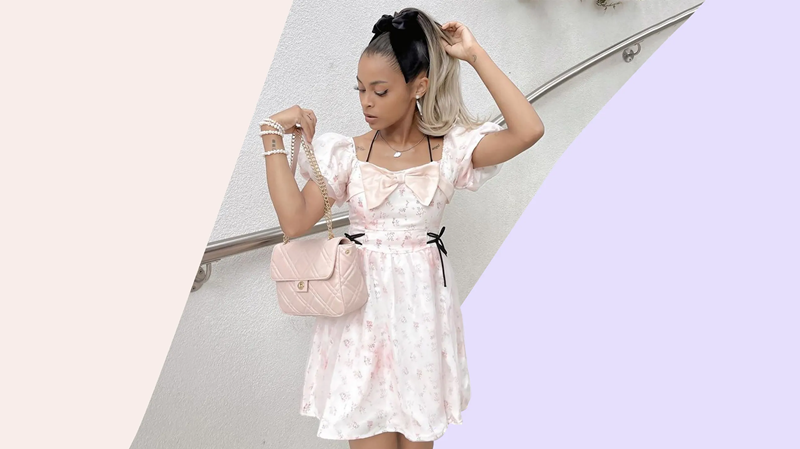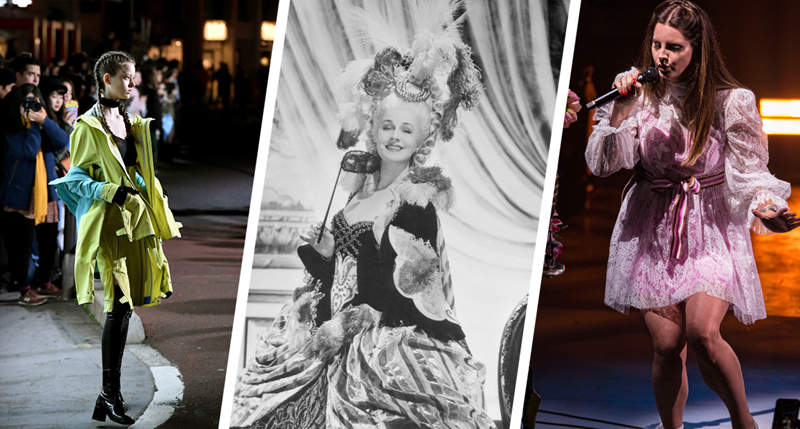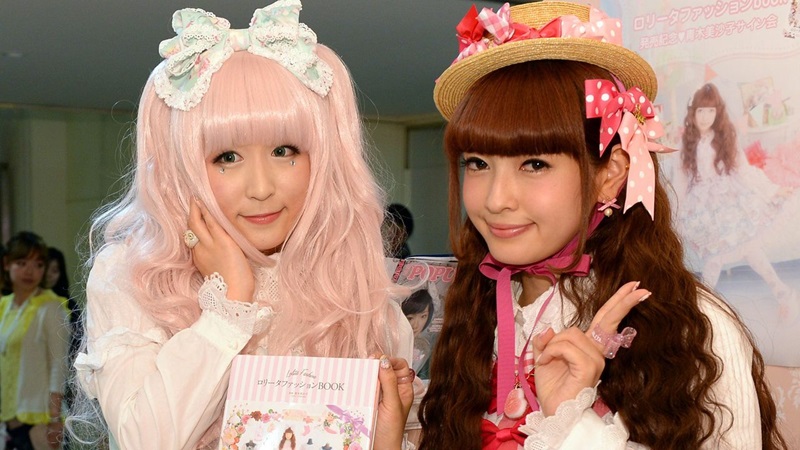Coquette Culture: The Ultra-Feminine Trend Igniting Controversy
Coquette culture has been making waves in the fashion and beauty industry, with its ultra-feminine aesthetic and emphasis on traditional notions of femininity. This trend has sparked controversy among critics who argue that it promotes outdated gender stereotypes and reinforces oppressive beauty standards. Supporters of coquette culture, on the other hand, argue that it is a form of self-expression and empowerment for women who choose to embrace their femininity in a bold and unapologetic way.
The trend is characterized by exaggerated femininity, with elements such as pastel colors, ruffles, bows, and delicate fabrics being key components of the coquette wardrobe. Makeup and hair are also important aspects of the coquette look, with soft, romantic styles being favored over more edgy or androgynous aesthetics.
While some see coquette culture as regressive and limiting, others view it as a celebration of femininity and a rejection of the idea that women should conform to a more masculine ideal of beauty. Ultimately, the debate over coquette culture is a reflection of larger conversations about gender, power, and self-expression in a society that is constantly evolving and redefining what it means to be a woman.
The Rise of Coquette Aesthetics
Coquette aesthetics have been on the rise in recent years, with many individuals embracing the playful, flirtatious, and seductive style. This trend can be seen in fashion, makeup, and even social media, where influencers and celebrities alike are adopting the coquette aesthetic as a way to express their confidence and femininity. The coquette aesthetic is all about embracing one’s sensuality and allure, often through the use of bold colors, figure-hugging silhouettes, and playful accessories.
This style has gained popularity among women of all ages, as it allows them to feel empowered and in control of their own image. With social media playing a significant role in spreading trends and influencing fashion choices, it is no surprise that the coquette aesthetic has gained traction in recent years. By embracing this style, individuals are able to showcase their personality and confidence in a way that is both fun and empowering.
Whether it’s through a daring outfit choice or a bold makeup look, the coquette aesthetic allows individuals to express themselves in a way that is bold and unapologetic. As this trend continues to gain momentum, it is clear that the coquette aesthetic is here to stay, offering individuals a new way to embrace their femininity and express their individuality.

The Debate Surrounding Coquette Culture
Coquette culture, a term used to describe the behavior of women who are flirtatious and enjoy attention from men, has sparked a heated debate in recent years. Critics argue that this behavior perpetuates harmful stereotypes about women being solely valued for their appearance and ability to attract male attention. They believe that coquette culture encourages women to prioritize their physical appearance and sex appeal over their intelligence and personality.
On the other hand, supporters of coquette culture argue that women should be free to express themselves in whatever way they choose, and that being flirtatious is a form of empowerment. They believe that women should not be judged or shamed for embracing their femininity and using their sexuality as a form of self-expression. The debate surrounding coquette culture raises important questions about gender roles, societal expectations, and the ways in which women navigate their own identities in a patriarchal society.
While some argue that coquette culture reinforces harmful stereotypes and objectifies women, others believe that it is a valid form of self-expression and should be embraced as a part of women’s empowerment. Ultimately, the debate surrounding coquette culture underscores the complexity of gender dynamics and the ongoing struggle for women to define themselves on their own terms.
Impact on Fashion and Social Media
Fashion and social media have become increasingly intertwined in recent years, with social media platforms such as Instagram, Pinterest, and TikTok playing a significant role in shaping trends and influencing consumer behavior. These platforms have democratized the fashion industry, allowing anyone with a smartphone and an internet connection to become a fashion influencer and reach a global audience.
This has led to a more diverse and inclusive representation of beauty and style, as individuals from all walks of life are able to showcase their unique fashion sense and personal style. Social media has also revolutionized the way that consumers interact with brands and shop for clothing, with many fashion retailers now utilizing social media as a key marketing tool and sales channel.
The impact of social media on fashion can be seen in the rise of influencer collaborations, where brands partner with popular social media personalities to create limited edition collections or promote their products to a wider audience. This has led to a blurring of the lines between traditional advertising and organic content, as influencers seamlessly integrate sponsored posts into their feeds alongside their regular content. While this has raised concerns about transparency and authenticity, it has also created new opportunities for brands to connect with consumers in a more genuine and relatable way.
In addition to influencing consumer behavior and driving sales, social media has also had a profound impact on the fashion industry’s creative process. Designers now have instant access to a wealth of inspiration and feedback from their followers, allowing them to quickly iterate on designs and respond to trends in real-time. This has led to a faster pace of production and a greater emphasis on trends and novelty, with many brands now releasing new collections on a monthly or even weekly basis. Overall, the intersection of fashion and social media has transformed the way that we consume, create, and interact with fashion, making it more accessible, diverse, and dynamic than ever before.

Psychological and Social Implications
Psychological and social implications play a significant role in shaping individuals’ behaviors and attitudes towards various aspects of life. From a psychological perspective, individuals’ mental health and well-being can be greatly impacted by societal norms, expectations, and pressures. For example, societal standards of beauty can lead to feelings of inadequacy and low self-esteem in individuals who do not conform to these standards. Additionally, the stigma surrounding mental health issues can prevent individuals from seeking help and support, leading to further psychological distress.
On a social level, the way individuals interact and communicate with one another is heavily influenced by cultural norms and values. For instance, in some cultures, expressing emotions openly may be frowned upon, leading to difficulties in forming close relationships and seeking emotional support. Furthermore, social inequalities and discrimination can create barriers to opportunities and resources, impacting individuals’ well-being and sense of belonging in society. Overall, understanding the psychological and social implications of various societal factors is crucial in promoting mental health and well-being for individuals and communities. By recognizing and addressing these implications, we can work towards creating a more inclusive and supportive environment for all individuals to thrive.
Cultural References and Media Representation
Cultural references and media representation play a crucial role in shaping societal perceptions and attitudes towards various groups and communities. The way certain cultures are depicted in the media can either perpetuate harmful stereotypes or promote understanding and appreciation for diversity. When cultural references are portrayed accurately and respectfully, they can serve as a powerful tool for educating and enlightening audiences about different ways of life and traditions.
However, when media representation is based on misinformation or sensationalism, it can lead to misunderstandings and reinforce negative biases. It is important for creators of media content to be mindful of the impact their portrayals can have on shaping public opinion and promoting inclusivity.
By showcasing a wide range of cultural perspectives and experiences, media can help bridge gaps between different communities and foster a more accepting and harmonious society. Ultimately, cultural references and media representation have the potential to either perpetuate harmful stereotypes and prejudices or promote understanding and appreciation for diverse cultures. It is up to content creators to ensure that their portrayals are accurate, respectful, and inclusive in order to contribute to a more equitable and empathetic society.

Alternative Feminine Trends
Alternative feminine trends are a growing movement that challenges traditional ideas of what it means to be a woman. These trends encompass a wide range of styles and behaviors that defy societal norms and expectations. From embracing androgynous fashion to rejecting conventional beauty standards, women are finding new ways to express themselves and assert their independence. Some women are choosing to forgo makeup and shaving, while others are exploring non-traditional gender identities.
These trends are not about breaking the rules for the sake of rebellion, but rather about reclaiming agency over one’s own body and identity. By embracing alternative feminine trends, women are redefining what it means to be feminine in a society that often dictates rigid gender roles. These trends are a powerful form of self-expression and empowerment, allowing women to challenge the status quo and embrace their individuality. As these trends continue to gain momentum, they serve as a reminder that there is no one-size-fits-all definition of femininity, and that women have the right to define themselves on their own terms.
